Indicator Evaluation of Perm Region Innovation System According to the Cluster Approach
Info: 20446 words (82 pages) Dissertation
Published: 16th Dec 2019
Tagged: Sciences
ABSTRACT
The need for the formation, development and improvement of the regional innovation system is determined by the global trends of countries economic development. In the 21 century one of the dominant trends of development, including economic development, is globalization. Global competition between developed and developing countries is due to new key drivers of economic development, such as the right to various types of intellectual property, financial resources, migration flows. Thus, in the context of globalization, attention is increasingly drawn to the regions. It is obvious that the successful development of the state is closely linked to territorial development and also with the formation and increase of the regional competitiveness.
The study of regional development in the USA and EU countries shows that in modern conditions the key factor of regional development is managing the development of the regional innovation system (innovation policy). Innovation policy forms the strategic competitiveness of the regions through the use of existing resources and the creation of a new resource provision of innovative development. Innovations, as one of the most important factors of economic development of the region, are the result of a number of targeted actions of the various participants of the innovation structure, as well as a result of its elements effective functioning.
The development of regional innovation systems is an objective necessity and a feature of modernization process of the Russian economy at the present stage. Interaction and cooperation between all participants of innovative process is necessary for the emergence of synergetic effect from interaction, and for creation of competitive advantages of individual members, groups and territorial formations. The innovation process is not always predictable, and it often occurs in spurts, the speed of innovation is an important factor in economic development. In innovation processes the role of community, collaboration and cooperation is very important, through which the redistribution of resources and competences occurs. The number of parties of the innovation process and the number of interactions and connections between them affects on the level of the regional innovation system development.
Keywords: regional innovation system,evaluation,cluster
CONTENTS
1.2 Research Purpose and Significance
1.3 Research in Russia and Abroad
1.3.1 Research of innovation system Abroad
1.3.2 Research of innovation system in Russia
1.3.3 Cluster-oriented approach in the regional innovation system
1.4. Research Contents and Methods
Chapter 2 Models and participants in the regional innovation system
2.1 Regional innovation system
2.2 Regional innovation system functions
2.3 The elements in the structure of the regional innovation system
2.4 Regional innovation policy
2.5 A synergistic effect in the regional innovation system
Chapter 3 Cluster development in the region
3.1 The cluster potential of the region
3.2 The members of the innovation cluster
3.4 The methodology of cluster potential evaluation
4.1 Theoretical and practical significance
4.2 International research background
Chapter 5 Empirical analysis of Perm region innovation system
5.1 Innovative susceptibility of the region
5.2 Indicator evaluation of the regional innovation system
5.2.1 Private indicator of the conditions of knowledge generation
5.2.2 Private indicator of the dissemination and use of knowledge
5.2.3 Private indicator of cluster potential
5.2.4 Private indicator of inclusion of the region into the world economy
5.2.5 Private indicator of socio-economic development of the region
5.2.6 Analysis of the result the integral index RIS
5.3 Analysis the extent of RIS formation
Chapter 6 Prospects for the development of RIS in Russia
6.1 The state development program
Chapter 1 Introduction
1.1 Research Background
The need in the development, improvement, improving the efficiency of regional innovation systems is especially relevant at the present time. In terms of global competition, attention is increasingly drawn to the regions as sources of competitiveness. The global economy is developing and changing system of relationships. In this context, regionalization of the economy can be seen as a systemic feature of the global economy.
The effectiveness of countries as a whole is largely determined by the national innovation system, this regional perspective allows to take into account the specifics and peculiarities of the individual site, prevailing sectoral specialization of regions and other factors affecting development effectiveness in the region, and as a result, the country as a whole.
The study of the processes of functioning and assessment of the level of development of the regional innovation system due to the need for and justification of development management regional innovation systems, in order to improve the quality of life through innovative development of the economy, and, as a consequence, the change and modernization of the social sphere. Innovation, as one of the most important factors of economic development of the region are the result of a number of targeted actions of the various actors of the innovation system, as well as a result effective functioning of its elements.
Currently in the Russian Federation, elements and subjects of innovation and the instruments for their regulation is poorly integrated in the regional innovation system, the individual elements do not represent a holistic and effective mechanism to ensure economic development of the regional economy.
1.2 Research Purpose and Significance
1.2.1 Research purposes
The purpose of this research is to develop conceptual frameworks and methodological provisions of the indicative assessment of the regional innovation system, taking into account the cluster approach to making informed management decisions for its improvement.
Achieving this goal involves the following tasks:
– the development of a model of regional innovative system;
– development of a conceptual framework to study the regional innovation system, taking into account the cluster approach;
– development of methods of indicative assessment of the level of development of the regional innovation system and its validation on the regional innovation systems of the Russian Federation subjects.
1.2.2 Research significance
Theoretical and practical significance of the work lies in the fact that the main theoretical and methodological provisions of the research contribute to the concept of formation and development of regional innovation systems and their evaluation for regional economic development that can be used to develop and improve mechanisms and processes of innovative development of regions. Certain provisions can be applied in the development of regional programs of innovative development of economy, the formation of cluster and innovation development of the region, development of regional development strategies.
1.3 Research in Russia and Abroad
1.3.1 Research of innovation system Abroad
Innovation system as a form of organization innovation occurs in 80-90-ies of the twentieth century. Foundation of regional innovation system in the initial stage is the innovative potential of the region. With the development, with effective functioning innovative system provides forming and effective use of regional capacities. One indicator of the development of the innovation system is the high rate of innovation and competitiveness of the regional economy.
The concept novation close to the concept of “innovation”. The concept of innovation as an economic category introduced into scientific circulation, and. in its theory of Schumpeter (1939).
In 80-ies of the twentieth century the most relevant was the concept of national innovation system as a basis for innovative processes. Attention gradually beginning to shift towards regional innovation system. H. Omae, R. Kuuk, C. Scott, D. Stopper note that traditional national boundaries of innovation systems, in varying degrees, disappear, the states are losing their power and influence to transnational institutions and organizations, on the one hand, and regional actors, on the other. Thus, the scale, the inertia, the complexity of managing national innovation systems move the interest in regional systems, and displays a globalisation of the economy of the region borders on the international level.
The concept of “innovation system” by various researchers treated differently. For the first time this notion was introduced by C. Freeman in 1987. It defines the national innovation system (NIS) as a network of institutions in the public and private sectors whose activities and relationship contribute to the design, import and penetration of new technologies.
The innovative system is considered as a set of institutions and S. Metcalf. National innovation system in his understanding is a set of various institutions which jointly and individually contribute to the creation, storage and transfer of knowledge and skills that define new technologies.
The institutional approach to the definition of the innovation system, adhere to L. Tukkel. The researcher notes that the innovation system, being a subsystem of the economy, focus on generating changes in the economic system through the acquisition of production and dissemination of new knowledge.
One of the first developers of the concept of regional innovation systems was F. Cook. He defined a regional innovation system as the set of nodes in the innovation chain, including directly generating knowledge of the company, as well as organizations, enterprises using this knowledge, a variety of structures that perform specialized mediation: provision of infrastructure, financing of innovation projects, their market expertise and political support. F. Cook emphasizes the importance of social and economic processes of creation, dissemination and use of knowledge to stimulate innovative activities in the region.
The concept of the regional innovation system found in the works of S. Kostiainen as a system of innovative networks and institutions within the region which contribute to innovative activities of enterprises in the region. Regional innovation system consists of companies, universities, technology platforms and organizations that promotes innovative development in the region, the author did not pay attention to actors, producing and implementing innovation.
A number of researchers (A. Sverker, D. Stffan, S. Soren, O. Christer) consider the innovation system enterprise-wide. The functioning of the innovation system of the enterprise provides the increase of competitiveness of production enterprises long-term sustainable growth and economic security of the enterprise. Thus, the innovative system can be formed and function at different levels: at the enterprise level, region, country, and global level.
1.3.2 Research of innovation system in Russia
Problems of creation and development of various innovative territorial entities acquired relevance in the 80-90-ies of the 20 century with the formation of the theory of innovation systems.
The selection as the target of the functioning of the innovation system, not just the circulation of knowledge and generate the innovations found in the works of S. Volkova. The author examines the national innovation system as part of the national economic system, consisting of a set of institutions whose activities are aimed at the generation and diffusion of innovation, complex economic mechanisms and activities that provide innovative processes.
The concept of regional innovation system appears in the works of A. Matiukhova. His work is divided into national and regional innovation system. National innovation system is understood as a set of institutions for innovative activities related to private and public sectors, and the regional innovation system is defined as the complex of institutions and organizations of various forms of ownership located in the territory of the region and involved in the creation and dissemination of new technologies. Institute of innovative activity in A. Matiukhova is a set of formal (legislation) and informal (traditions, customs, codes of conduct) of the rules, structuring relationships of actors in the innovation sphere, as well as a Mature set of subjects of innovative sphere – the state, large corporations, public and private funds, investment banks, system of support of small innovative business (business incubators), technology parks, scientific and research institutions, educational institutions, small innovative companies, etc.
A. Matyukhov defines the structure of the innovation system as a set of subjects of innovation activity and innovation infrastructure. The innovation actors include the government, large corporations, public and private funds, banks, system of support of small business innovation, small innovative companies, educational, scientific and research institutions (this definition resonates with the concept of triple helix innovation Henry Etzkowitz). Innovation infrastructure is defined by A. Matiukhov as a set of production and technological, consulting, financial, human, informational and marketing components.
N. Ivanova, E. Egorov, N. Beketov, V. Shepelev consider and make their own additions to the concept of national innovation system, adhering to the subject-object approach.
A group of researchers (Y. Anisimov, E. Solntsev, S. Shaposhnikov) define the innovation system of a region as a set of interrelated elements of the innovation activities of research institutes, innovation centres, technology parks, technological centres, innovative enterprises, small innovative business, venture funds and other structures, as well as the infrastructure of innovation activity, the functioning of which is aimed at implementation of innovative projects and programs, obtaining scientific-technical, economic, social, political or other effect while ensuring the innovative development of the region. The authors believe that the formation and effective functioning of the innovation system should be established innovation infrastructure, technology, processes and procedures that interact and enable the development of innovative activities as the region as a whole and individual innovative projects (research organizations, industrial enterprises).
E. Maskajkin defines the regional innovation system as a set of various institutions which jointly and individually contribute to the creation and dissemination of innovation and lead to innovative development of the region. While institutions refer to the subjects of innovative activities, rules and regulations of their functioning and mechanisms in place to ensure compliance with these rules and standards, promotes innovative development.
An interesting approach V. Vorobyov and N. Tikhomirov. Without defining the innovation system, the authors describe the structure of the innovation system. The structure of the innovation system, according to the authors, consists of technical and scientific subsystem, infrastructural subsystem (provides funding, commercialisation and technology transfer), subsystem management innovation (regulatory framework, government support measures), of a subsystem of interaction with innovation systems of other regions (the mechanisms of interaction among regional innovation systems, regional innovation system and national innovation system) and the subsystem for preparation of scientific and technical personnel. Separately addresses the issue of the necessity of a subsystem of monitoring of innovation development of the regions of the country. The need for monitoring not only at national but also at regional levels, due to the need for effective management of innovation development of the region of the country.
It is necessary to consider the approach taken in official regulatory documents in the sphere of innovation development, the innovation system is understood as a set of subjects and objects of innovation activities, interacting in the process of creating and implementing innovative products and operating in the framework of the state policy in the field of development of innovation system.
1.3.3 Cluster-oriented approach in the regional innovation system
Foreign studies of regional innovation systems represented by the works Lundvall, Nelson, Cook, Howell, Malerba, Camagni, Karlsson and others on the basis of the research is the approach to innovation as a process of interaction and evolution. Innovations are not seen as separately occurring fact but as a process in which various actors generate innovations in processes of interaction. Regional innovation system is characterized by cooperative processes between companies and organizations in the generation and diffusion of knowledge (universities, research organizations, technology transfer offices) that provide innovation activity, and environments that support innovation.
An innovation system consists of elements and interactions in the processes of production, diffusion and use of new knowledge. This knowledge is used for practical, commercial purposes. However, once created, knowledge disseminated, and used, not always circulates in the form of products and services, but may also have social effects. This more specific knowledge may take the form of new concept, new competences or skills, technological or organizational improvements. Innovation system is a social and dynamic system. The system is social because the core of the system – training – is a social activity. Innovation bring to the system feedback and reproduction, which ensures the dynamics of the system. Thus, innovation is not linear but a recursive process and the system is recursive by nature. Learning is defined as the main function of innovation system: learning by doing, learning by using, learning by interaction. New knowledge is created in universities and in the field of research and development (public, private laboratory). In this study the regional innovation system is close to the concept of triple helix innovation G. Etzkowitz. The internal mechanism of regional innovation system is largely described by the principle of triple helix innovation G. Etzkowitz and L. Leydesdorff. The concept of triple helix innovation lies at the heart of building regional innovation system, as it reveals the relationships among its key participants – government, business and science.
The main influence on the formation of the concept of regional innovation system in the foreign studies had evolutionary, institutional, regional economy, knowledge economy, Economics of innovation and network theory. Foreign researchers identify the following components of the regional innovation system:
– companies;
– inter-firm collaboration;
– the role of the public sector;
– financial sector;
– research and development;
– industrial structure;
– spatial structure;
– training system, competence, communication culture.
Participants in the regional innovation system interact through processes of production (generation), diffusion and use of new knowledge. Dynamics of regional innovation system provides a constant circulation of knowledge and information, financial flows, networking and informal interaction.
Regional innovation system is an open system that interacts beyond its borders, which means that the process of diffusion of new knowledge and technology by its nature is directed in both directions, in-out and from outside. Regional innovation system is influenced by other regional innovation system, national innovation system and other international factors. Great importance of interaction in the regional innovation system with the external environment, as it accelerates the circulation of knowledge within the system, which provides greater speed of innovation.
In foreign researches of the regional innovation system is a normative and descriptive approach to the study of processes of technological development in a certain area. This approach is widely used to develop measures and policies to improve the innovative activity of regions at any level of development. Institutional characteristics of the region, the infrastructure of knowledge and knowledge transfer are the basic conditions and incentives for innovative activity in the region. Also emphasizes the importance of concentration and localization of the processes of creation, dissemination of new knowledge and technologies and the generation of new knowledge and technology. Thus, the concept of regional innovation system has a number of points of contact with the theory of clusters, the concept of triple helix innovation.
1.4. Research Contents and Methods
1.4.1 Research Contents
Theoretical and methodological basis of the research will be the concept of triple helix innovation, cluster theory, General systems theory, theory of innovation-driven development, applied research, well-known domestic and foreign scientists and research institutions on regional innovation systems.
1.4.2 Research Methods
The work will apply the methods of logical-structural studies, a systematic, comparative and statistical analysis. There are used various methods of economic and statistical groupings (typological, structural and analytical). Processing of the data was carried out with the use of modern software.
1.5 Thesis Framework
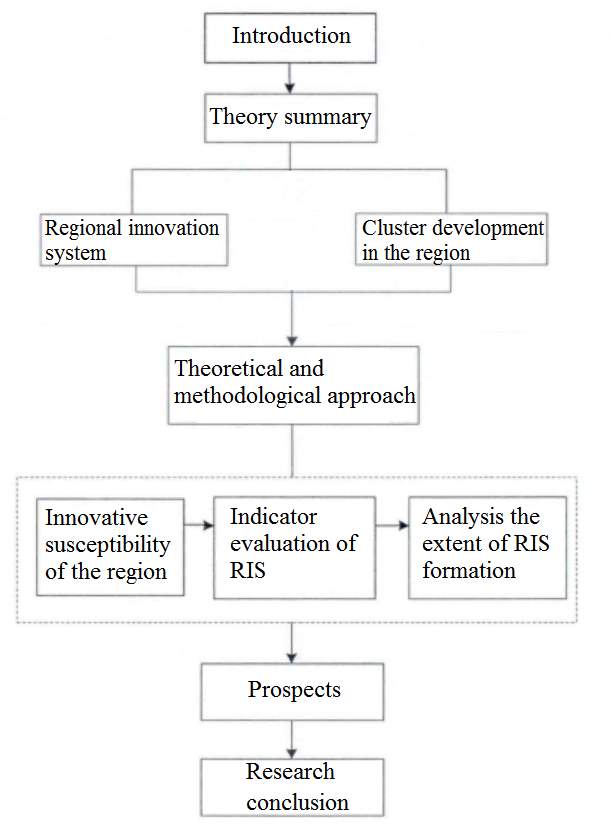
1.6 Chapter Summary
The Chapter describes the purpose, objectives, significance of the research and research methods. Research international practice and Russian experience, in particular.
Chapter 2 Models and participants in the regional innovation system
2.1 Regional innovation system
Regional innovation system (RIS) is a set of institutions in the region, which together and individually, are involved in the process of creation, transformation and diffusion of innovation.
Innovative development of the economy of developed countries suggests a systematic approach based on:
– integration into global collaboration through supra-national, national and regional innovation policy;
– the development of economic sectors contributing to the growth of the knowledge economy;
– public participation and encouraging private investment in R&D;
– use of various direct and indirect instruments of stimulation of innovation and research;
– promoting the creation of innovation clusters and technology transfer;
– strengthening the institutions of the innovation economy (improving the system of intellectual property protection, support of competition);
– development of innovative infrastructure of the region;
– development of venture mechanisms and of other forms of stimulation of innovative activity of small and medium-sized businesses.
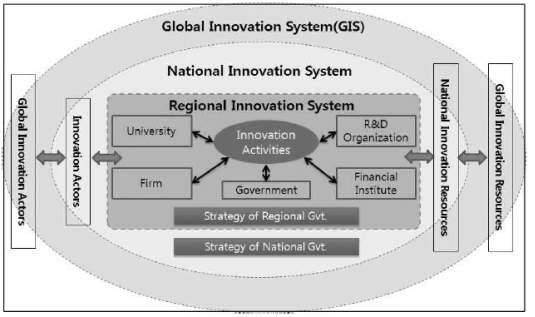
Figure 2.1 Regional innovation system
Since 2000 more and more attention in the development of regions, it is noteworthy cluster oriented approach, reflecting the transformation of regional specialization and sustainable competitive advantages of regions. This interest is reflected in state programs clustering of innovative development of the countries of the Organization for economic cooperation and development, such as Canada, Czech Republic, Finland, France, Germany, Italy, Japan, Korea, Netherlands, Norway, Spain, Sweden, UK, USA. In France, for example, 2 major programmes for the development of clusters – Poles of competitiveness, Local system productivity; in Germany there are 3 types of programs of development of clusters – support for specific scientific sectors (Bioregion, Bio profile, Life competencies), programs of regional growth poles corresponding to the priorities of the EU programs, the Programs combined goals for the improvement of regional economic structures; in the UK, government policy creates the conditions for the regions for development of clusters, Regional development Agency and the regional administration of development program of clusters in regional economic strategy in accordance with the priorities of regional development.
The cluster approach is a good tool for promoting regional development is one means of structural changes, enhance innovation orientation. The theory of clusters describes the construction industries in emerging concentrations of companies and encouraging development in these areas with strong connections within each cluster. Clusters reflect the interaction of organizations within it, through cooperation, synergy.
To date, there is no uniform terminology and clear definition that is a cluster. In this regard, the regions where the interacting companies and organizations, grouped according to the criterion of commonality of production or output, sometimes referred to as industrial districts, industrial complexes, regional innovation system and others with different terminological approaches, goals and objectives of the associations are companies in their interaction, cooperation, and provide competitive innovative development of these associations.
2.2 Regional innovation system functions
Regional innovation system is part of the national innovation system. Within the competence of the Federal authorities, the rules of functioning of the RIS is partially set at the Federal level, the Federal authorities also fulfil a coordinating role in relation to the regional innovation system.
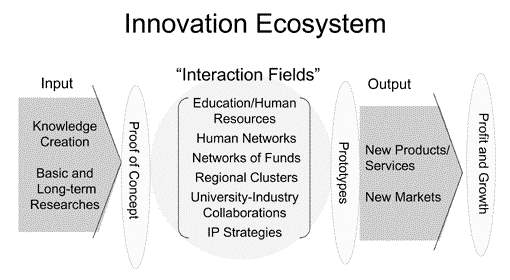
Figure 2.2 Innovation ecosystem
The main functions of the innovation system are to:
– generation and implementation of scientific achievements;
– increasing productivity, lowering the cost of goods and services;
– installation of new quality standards of goods and services, stimulating the diffusion of innovations, and impact on quality of life of the population and the quality of production;
– applying efficient processes, high-tech equipment;
– strengthening synergistically interact;
– promotion and development of professional competences, creating high level workers.
2.3 The elements in the structure of the regional innovation system
Structural model RIS presented interacting with each other and with the external environment subsystems, which characterize the conditions and process of generation, diffusion and use of new knowledge and technologies as well as subsystems. The relationship between the subsystems is a necessary condition for the existence of the innovation system.
The main participants in the RIS:
– business sector: companies, firms, enterprises, financial institutions. Also the elements of the innovation infrastructure: industrial parks, technology parks;
– public sector: regional ministries and departments, regulators, state-owned enterprises;
– the research sector – universities, research institutes, research company. This may also include the organization of innovative infrastructure of universities and the region: the business-incubators, transfer offices and commercialization of technologies.
The main external factors (the environment far beyond the influence of RIS) that affect RIS:
– macroeconomic factors (inflation, economic growth);
– political;
– cultural and historical;
– the regional innovation system of the neighbouring regions;
– national infrastructure.
To environmental factors, changing under the influence of processes RIS, include:
– economic, economic system of the region;
– the infrastructure of the region;
– regional government institutions;
– financial system of the region;
– the training and development of personnel;
– social system of the region;
– the natural system of the region.
The system is a social and dynamic interaction of subsystems provides continuous circulation of knowledge and information, financial flows, networking and informal interaction. RIS interacts with factors in the macro environment and external environment. Regional innovation system influence other RIS, the national innovation system and other international factors. The interaction with the external environment speeds up the knowledge circulation flows within the system, which provides innovation grows. In the proposed model of regional specialization is presented through cluster capacity, which ensures the diffusion of new knowledge and technologies.
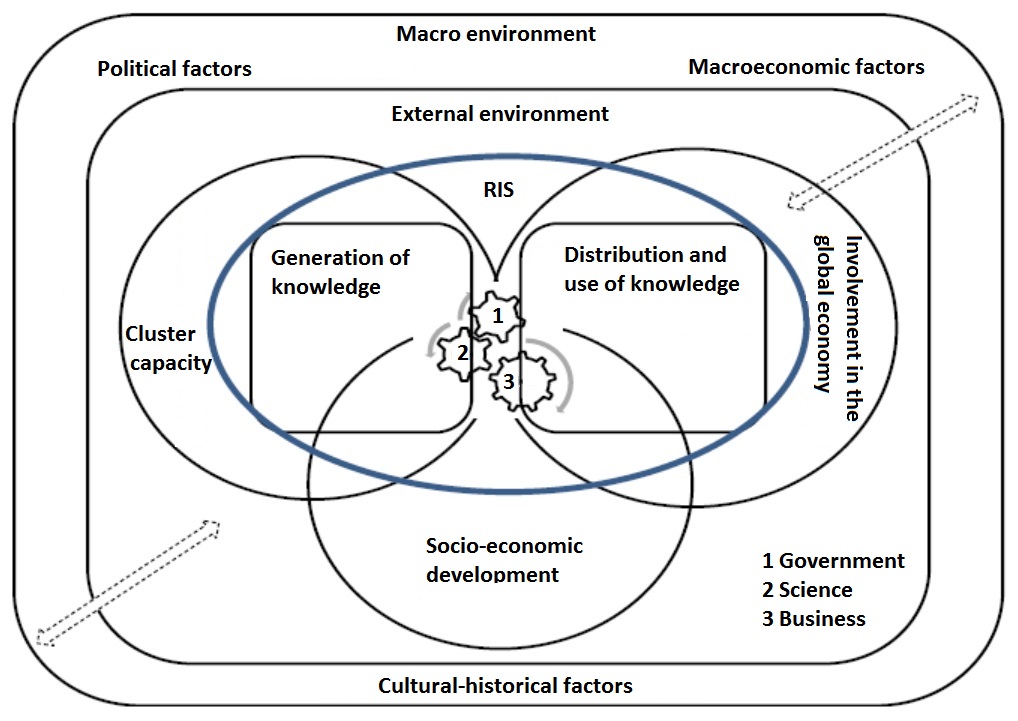
Figure 2.3 Elements of the regional innovation system
This structural model RIS allows to determine the development level of subsystems, elements, subsystems, which will analyse, compare, classify, RIS, and to determine directions of perfection of organizational-economic mechanism of management of development RIS.
The activities of all elements of the RIS has as its main objective the progressive change in the socio-economic development of the region, including improved living standards, innovative approach to scientific and technological development, and ensures the development of a competitive regional economy.
2.4 Regional innovation policy
Regional innovation system is focused on an increase in regional product the share of high-tech products, the creation and introduction of energy saving technologies, transfer of knowledge and technology. However, a regional innovation policy should be aimed at improving the technological structure of enterprises in the region and innovation support sectoral production chains. Integration of RIS in national and global innovation systems is realized through effective dissemination (diffusion) of innovations. Public sector and state innovation policy play a vital role in the development of the regional innovation system. They create a system of communication that helps to spread knowledge and innovation within the regional economy and beyond.

Figure 2.4 Regional innovation system policy
Effective RIS can only be realized on a space with a high concentration of scientific and technical potential. Such areas have good institutional design: academic, information technology, industrial, financial, market infrastructure, with the necessary scientific, technical and managerial human resources, a high degree of development of relations with global innovation centres. Innovative systems of different countries have different industry focus and productivity, due to both external and primarily internal factors: historical, socio-economic development of a country, level of technological development of the nation, its experience innovation.
2.5 A synergistic effect in the regional innovation system
The efficiency of RIS is determined not only by the presence and degree of development of these structures and internal relations between the individual elements and subsystems. What intersystem relationships between elements in the RIS give it the economic integrity and ensure competitiveness by obtaining synergistic effects.
In the model of reproduction of innovations in the region, or the concept of triple helix innovation, universities, along with academic institutions are a source of new knowledge and technologies. In this regard, it is necessary to identify the universities as the element of RIS. The main mission of universities is to generate knowledge through research and formation of professionals. Universities are the source of the continuous generation of knowledge, whose infrastructure allows us to commercialize research and development, transfer of technologies and, therefore, to serve as an effective economic agent receiving income from its intellectual, scientific activities. Innovative infrastructure of the University is a complex information and communications, logistical and cultural factors that shape the entrepreneurial image of the University.
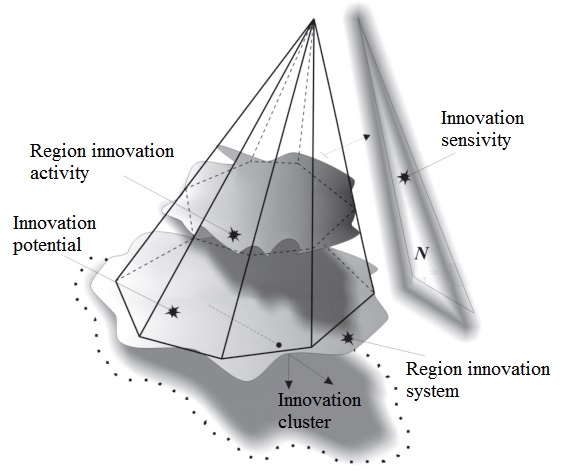
Figure 2.5 A synergistic effect in the regional innovation system
Key point of contact between RIS and innovation infrastructure of University based on the concept of triple helix of innovation:
– the specificity of the interaction between business and universities is to stimulate the whole educational system as teaching and research, and to the fruitful participation in the work for task orders to commercial firms and supporting their daily work.
– partnership businesses and institutions of higher education is characterized by the transfer of knowledge and technologies through the exchange of students and teaching staff between universities and enterprises, with serious involvement of the business in the system of University administration.
– prospects of cooperation of universities and businesses depend on the ability of all participants to clearly define the “rules of the game” and to establish “a relationship based on mutual influence and learning,” in which both parties in a timely manner are adapted to the needs and specifics of their partners.
In the development of innovative system of the region, a significant role can be played by small innovative companies created at universities. In turn, the strategic mission of the University is to promote the dynamic development of scientific-technological complex of the region and ensuring the necessary human resources. Thus, on the basis of universities on the basis of their effective innovation infrastructure it is possible to achieve effective use of the regional factor conditions (technological solutions, investment, personnel, and entrepreneurial abilities) to form the regional innovation system.
Analysis of the regional innovation system and innovation infrastructure of universities allows us to consider innovative infrastructure of universities as one of the most important tools of development and improvement RIS. The weak elements and weak associations between the elements of innovation infrastructure of universities are a significant limiting factor for the development of RIS, to start the triple spiral of innovative development of the region. The ability to analyse the structure of the RIS enables you to define a list of measures for improvement and development of the regional innovation system.
Regional innovation system is a set of specific regional conditions that ensure the development of regional economy:
– the presence of researchers and companies involved in the development of advanced technologies in the area of specific knowledge. The influx of new ideas is the first prerequisite for the successful functioning of the RIS;
– the existence of community, and create ideas and have the opportunity to get together and discuss them, with the result that new ideas;
– the existence of economic agents with entrepreneurial, managerial and business abilities;
– the possibility of financial support of innovation through access to venture capital, financial resources, business angels and a large number of individual investors.
2.6 Chapter summary
In this Chapter discussed the innovative structure of the region. It is a complex socio-economic system consisting of different elements. The whole system is characterized by a variety of changing relationships, different interests of the participants of the system.
Chapter 3 Cluster development in the region
3.1 The cluster potential of the region
The level of development of the region is inextricably linked and determined by the functioning of the regional economy. The region’s potential is realized through the involvement of the region’s resources and use them effectively. It should be noted that the region is unlikely to be developed in all spheres of economic activities, hence the need to identify potentially promising areas for development. This enables you to implement the cluster approach.
Clusters are an integral part of the regional innovation system, characterizing the level of maturity RIS. The formation of an integrated regional cluster of separate sectoral components of the region, business organizations and enterprises of different ownership forms is possible only through concerted action on the system integration of regional resources under the state development strategy (research and innovation, industrial policy).
Regional innovation system includes the innovative clusters, which act as strategic elements and areas of high concentration of innovative activities or growth poles. A leading role in the global industry structure, national-regional economy is played by regional clusters. At the level of regional clusters integration of science, education system and regional production. The interaction of science-business-government is carried out in order to:
– providing marketing, research, engineering, personnel and technological innovation of the pre-production preparation of the reproductive cycle of the regional economy;
– territorial localization and concentration of production in order to create a complete industrial chain and the organization of effective business processes;
– post-production ensuring the competitiveness of a regional cluster (branding, efficient logistics, fast sales).
The diversity of factors influencing the creation of the RIS, forming in each case individual regional innovation system. The composition and structure of RIS depend on the sectoral specialization of the region, productivity for businesses in the region, level of educational, scientific-innovative and institutional capacity.
The concept of cluster potential of the region describes the possibility expressed in the presence of certain resources to create competitive advantages of interactive group of companies and infrastructure companies located on the territory of the region. Assessment of cluster potential must be taken into account when assessing the regional innovation system as an important indicator of its development.
The common cluster infrastructure, enabling environment for the exchange of knowledge, ideas, a single labour market is not all of the benefits for companies from geographical proximity. Companies in the cluster increase, primarily, their competitiveness. The performance indicators of the cluster include the generation of new knowledge, speed of innovation, speed of commercialization of innovations. These figures are partly correlated with indicators of efficiency of regional innovative system that allows us to talk about the necessity of applying the cluster approach in examining, assessing and analysing the regional innovation system as a whole.
It is also important to note that a possible element clusters, and wherein an essential element of RIS are technology parks, science parks, as elements of the connecting infrastructure.
In the model the influence of the cluster on the competitiveness of the region reflected the General scheme of interaction of elements of the cluster and displays a synergistic effect.
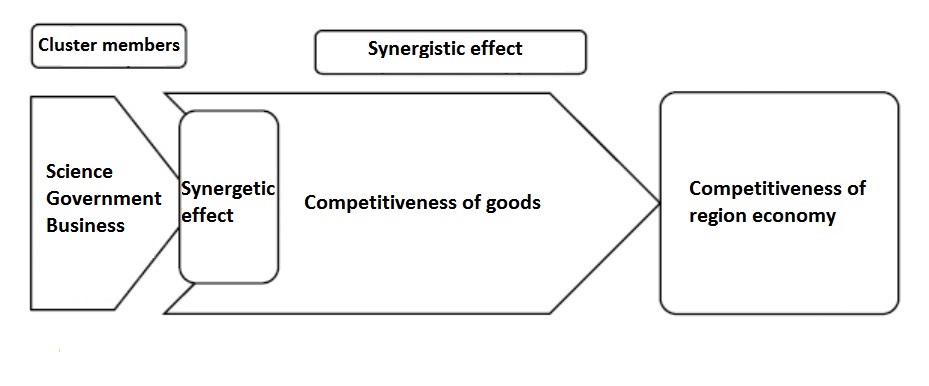
Figure 3.1 General scheme of interaction of elements of the cluster and displays a synergistic effect
Cooperation and effective use of the possibilities of the enterprises cluster, the combination of cooperation and competition, let talk about synergistic effect, exceeding the simple sum of efficiency of individual companies. A cluster is always greater than the sum of its individual parts.
3.2 The members of the innovation cluster
Members of the cluster are a lot of companies: manufacturers and suppliers, research organizations and Universities, financial institutions and banks, public authorities and consulting companies, professional and civic organizations. This suggests a deep integration of the cluster in the regional economy. In turn, the interaction of a large number of companies and institutions suggests that the cluster structure reflects a full regional structure of the economy.
Analysing the purpose of cluster development, not to mention a large intersection with the objectives of the regional innovation system. The main goals of the cluster include:
– improving the competitiveness of cluster members through the introduction of new technologies;
– increase the tax base of the region (increase revenue of companies in the cluster);
– the creation of new jobs;
– increase in entrepreneurial activity;
– attraction of investments;
– improving the quality and reducing the cost of goods and services through the introduction of innovative technologies and developments;
– improve performance;
– applications of the innovations;
– joint representation of the interests of cluster members in different authorities.
Main indicators of activities of the cluster are: high labour productivity, innovation activity, foreign economic activity.
Let’s summarize the factors contributing to the integration of companies and organizations in the industrial cluster:
– geographical proximity;
– community activities;
– dissemination of information, skills, and technologies. The possibility of effective exchange of ideas;
– the growth of productivity;
– minimization of expenses for operating activities (outsourcing), for the introduction of technologies due to economies of scale;
– increase global competitiveness of companies in the cluster, access to new markets;
There are different approaches to the classification of the clusters:
– in terms of territorial coverage (national, regional, local, cluster);
– stage of development (pre-cluster or agglomerate, emerging, developing, Mature, transformation cluster);
– the degree of novelty of products (industrial, innovation);
– size based on the number of jobs;
– by industry sector (mining, manufacturing cluster, cluster services);
– size based on the level of profit from exports (small, medium, large);
– the differences in the structure of the relationships;
– according to the degree of innovativeness (dependent, industrial, industrial innovation, innovation, innovation-oriented cluster);
– role in the exchange and use of knowledge (clusters on a scientific basis, clusters of suppliers, specialized manufacturers);
– by the presence and degree of development of elements of the cluster structure (strong, sustainable, potential, latent);
– level aggregation of cluster members (regional-a limited form of economic activity within related sectors, vertical production linkages in the narrow spheres of activity and industry clusters in different types of production with a high level of aggregation);
– the nature of the industry enterprises-cluster members (process, discrete, innovative, travel, transportation and logistics).
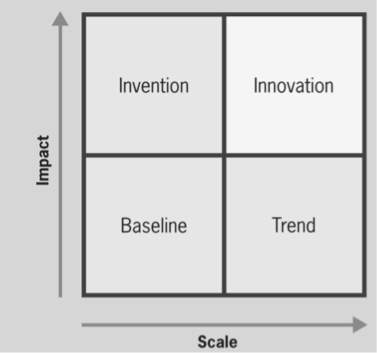
Figure 3.2 Purpose of cluster development
Despite considerable interest in the subject clusters in the Russian Federation, not all the regions are implementing programs of cluster development and would rather be not on the generated clusters, the cluster potential of the region.
3.3 Region cluster focus
The structure of the region is represented by the profile, the base of businesses and industries, providing the income of the region due to the export of products and services. The focus of a regional government exists for data to companies and industries. Local market serves small industry, which affect the social indicators of the region, therefore, they fall within the scope of attention of the authorities. Traditions of state control in the Russian Federation are connected with the leading role of public authorities in implementation of various initiatives, including the development of private enterprises. Cluster development may be spontaneous or organized. Traditionally in the Russian Federation, an important initiator of the formation of the cluster are the public authorities. Without the support of regional authorities, the formation and development of clusters is extremely difficult. The role of regional authorities is reduced with increasing the level of mutual trust between members of the cluster.
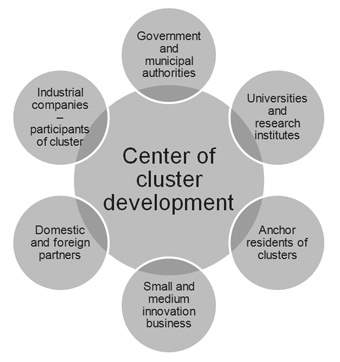
Figure 3.3 Region cluster development members
A policy aimed at creation of clusters starts with the identification and evaluation of existing regional prerequisites. The key prerequisites for the emergence of the cluster include:
– the presence of key personalities of the enterprises interested in cooperation in the framework of the cluster initiation and cluster creation;
– established mechanisms of interaction between enterprises, which provide the necessary level of trust;
– high innovation potential of enterprises;
– the need to expand foreign markets;
– the interest of public authorities in cluster development in the region;
– the needs of a cluster of normative-legal base;
– the presence of business support infrastructure;
– a system of education that provides the necessary level of personnel for the enterprises of the cluster;
– sensitivity and commitment to innovation.
Thus, simply the presence of a certain number of enterprises in the same sector, their geographical proximity and the regulatory framework are not sufficient conditions for the emergence of the cluster. Much more important are “soft” background – the General level of trust, the particular interest of representatives of business, authorities, educational institutions and other organizations involved in the processes of cooperation and competition.
Clusters and regional innovation system provide the effects in the long run. Short-term regional programmes related to the budget cycle, unfortunately, is not conducive to the sustainable and dynamic development of clusters and RIS as a whole.
3.4 The methodology of cluster potential evaluation
Cluster strategy can be based on one of the seven basic characteristics of the cluster or their combinations:
– geographical feature involves the construction of spatial clusters of economic activity. The cluster must be localized in a certain area;
– horizontal structure of the cluster suggests that the cluster includes several industries and sectors.
– vertical structure of the cluster suggests that adjacent stages of the production process are in the same cluster by different companies;
– lateral structure is formed when the savings from economies of scale will lead to unification in a cluster of companies in different sectors;
technological feature involves the use of one technology in different industries. An example of such a cluster can be a biotech cluster;
– focus structure of a cluster is a concentration of companies around a single center, which can be by both the company and the school;
– qualitative characteristics describes the working of the company, how actively appear, introducing, the use of innovative technologies and services.
These methods in turn can be divided into two groups – quantitative and qualitative. Among quantitative methods for identifying clusters are:
– factors of localization;
– table “input-output” (cross-sectoral balances);
– method of analysis of shifts (Shift-Share method);
– agglomeration index Ellison–Glaser (Ellison–Glaeser) and Marel–Sedillot (Maurel–Sedillot).
Note that, despite the considerable interest in the subject clusters in the Russian Federation, application of the foreign methods of identifying clusters is difficult because of the lack of statistical data. Each method has also several limitations: does not reflect the role of the institutional structures of the universities, infrastructural elements, dynamics. Analysis of RIS given the potential of the cluster allows to partly compensate for these shortcomings of methods of identification of clusters, as it reflects the conditions of the functioning of the RIS, the results of the processes of creation and dissemination of new knowledge and technologies.
One of the most used methods is the determination of the coefficient of localization (LQ), which is used by Russian and foreign researchers. Coefficients of localization determine the specialization of the region, comparing the economic characteristics of sectors (the number of employees, sales volume, gross value added etc.) at regional and national level. The value of this ratio shows a dominant sectoral specialization of the region. This method is used in the methodology of the dissertation research.
The development of science and education contributes to the return on invested capital of enterprises by qualified personnel. Cost reduction and innovation attracts investments that in turn bring not only financial resources, but often new technologies, new management approaches, and new intellectual resources. Efficient use of assets allows you to produce greater quantities of goods and services, the best quality, which promotes the growth of the gross regional product.
Based on the foregoing, the cluster is one of the effective tools of regional development, and therefore we think that the inclusion of cluster potential in the integrated assessment of the regional innovation system. Despite the fact that in Russian practice, the clusters are usually considered as elements of regional competitiveness, we believe that clusters are an integral component of the regional innovation system for the following reasons:
– the geographical proximity allows firms in the cluster to obtain a synergistic effect from the following components: a community cluster infrastructure, overall environment of knowledge exchange, a unified labour market. These factors have a great influence on the efficiency of the cluster, reflected in the generation of new knowledge, speed of innovation, speed of commercialization of innovation;
– parks and technology park of the elements of the RIS and elements of the clusters that confirm the need to include cluster component in RIS;
– performance indicators of a cluster in a certain way correlate with the performance indicators of the regional innovation system and competitiveness indicators;
– geographically, the cluster is always located in the region (inter – regional clusters is a rare phenomenon in the Russian reality, because of the large extent of the territories of regions). In Europe, the presence of inter-regional clusters due to the territorial proximity regions, although different legislation governing the economic activities of a certain region contribute to the development of the cluster within a certain administrative territory;
– cluster impact on the socio-economic development of the region as RIS. Cluster members (companies, educational institutions, representatives of authorities, etc.) at the same time are part of the elements of the regional innovation system;
– cluster is a tool of innovative development. Clusters differ from a simple group of enterprises greater economic efficiency, innovation, and, as a result, a synergetic effect from interaction. A synergistic effect is reflected in a significant impact (compared to impact individual companies) on the socio-economic development of the region.
3.5 Chapter summary
A revised model of regional innovation system, including subsystems of generation, dissemination and use of new knowledge and technologies, and to a certain extent, provide subsystems of the cluster potential inclusion into the world economy and socio-economic development. Determined the relationship between the subsystems of the regional innovation system and external macro environment. The results of this justifies the necessity of development of methods of assessment of the level of development of the regional innovation system and tools for its improvement.
Chapter 4 Theoretical and methodological approach to the indicative assessment of the regional innovation system
4.1 Theoretical and practical significance
Theoretical and practical significance of the indicator of innovative development of the region is that its value will identify the effectiveness of regional innovation resources.
Assessment and analysis of innovative development have become key aspects in the prognosis of further development of socio-economic processes and the nature of the changes in trends. In this case, the assessment of innovative development should be carried out taking into account the factors of influence to more accurately evaluate the one-time investments and operating costs for every percentage of regional income increase at the expense of development, deployment and use of innovation.
Each region is interested in establishing a favorable innovation climate, but faces real problems that require additional costs. Assessment of innovative development of the region will allow to obtain promising data for the use of innovative potential in the region. The innovation potential is a complex system of interacting resources, so the indicator rating will allow to reflect the innovation perspectives of regional development using a limited number of indicators.
Indicator assessment includes indicators of balance, the right balance between the elements of the regional innovative potential, opening opportunities for the creation of an economic system characterized by maximum productivity and efficiency.
4.2 International research background
Currently, there are a number of different foreign and international methodologies of assessment of innovation system in the region. In many methodologies for assessment the level and characteristics of innovative potential of regions there is used an integral coefficient as the final indicator. Integral gain allows to analyze and compare values in different regions.
Regional innovation system is assessment through innovative potential, innovative activity, innovative development. In international methodologies innovation system is often assessment through global indicators of competitiveness. This fact confirms the strong correlation of the innovation system and the competitiveness of the territory. Matches on a large number of parameters, used in these valuation techniques, allow to consider them together.
A well-known method of assessment the level of innovative economy development is a sub-index of innovation development of The global competitiveness index (GCI), calculated for reports on global competitiveness by the world economic forum, global innovation index (GII), calculated by The Institute of business administration INSEAD and The Innovation Union Scoreboard (IUS).
The most well-known ratings of innovative development of countries are The European Innovation Scoreboard (EIS), The International Innovation Index (III), The Global Competitiveness Index (GCI), The Global Innovation Index (GII). At the regional level, the monitoring of innovation development in The European Union is presented as The Innovation Union Scoreboard (IUS), and in the US as Portfolio Innovation Index (PII).
For the assessment of innovative development of the EU regions there are used 16 indicators. Within IUS an absolute ranking of individual regions isn’t applied, but there are allocated and prioritized the groups of regions with similar level of innovative development.
As the result of RIS assessment in the EU there are allocated five types of innovation territories: strong innovators, medium-strong innovators, medium innovators, medium-weak innovators.
Unfortunately, most of the above mentioned indicators of innovative potential assessment cannot be calculated in the Russian Federation in full measure, as the Russian statistics do not count for the required assessment indicators, which explains the fact that these techniques are not widely used in Russia. However, during development of the method for the RIS assessment there were considered the main approaches to the choice of indicators adopted abroad.
Methodology – a set of methods, rules of appropriate execution of the work, the methodological recommendations on evaluation research. The method includes:
– objectives the objective of the analysis;
– objects of analysis;
– system of indicators for the study of object analysis;
– methods of research of objects of analysis;
– the data on which the analysis;
– organization of the process analysis;
– the consumers of the analysis results.
The technique involves two main aspects:
– methods for the assessment of particular indicators RIS, which includes elements of a methodology for identifying clusters. Methodology is the justification of criteria, systems of generalizing and private indicators to measure the RIS;
– the algorithm of calculation of the consolidated index to the RIS, including the methods of calculation and aggregation, as well as the analysis and relations of private indicators RIS.
To achieve this goal, it is necessary to solve the following problem (Fig.4.1):
– to establish a system of indicators to assess the RIS
– calculate particular indicators RIS;
– to analyse the contribution of private indicators integral index RIS, their level of development, dynamics of change of the integral index RIS;
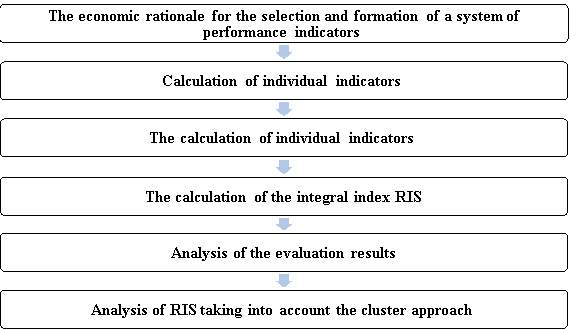
Figure 4.1 Algorithm of Indicator Evaluation of Region Innovation System According to the Cluster Approach
Comprehensive assessment of the development of regional innovation systems must meet a number of requirements: assessment should reflect the processes of development and functioning of the innovation system of the region; to contain a system and a comparable set of indicators; reflect the security indicators, periodic and statistical (official) information. Objective evaluation RIS is a complex, multi-component and time-consuming process. The complexity of this evaluation reflects the challenges of combining different indicators into indicators, and indicators integral index. When assessing these indicators of conditions of RIS, dissemination and use of knowledge, the cluster potential of the region, inclusion of the region into the world economy and an indicator of socio-economic development, consisting of a number of partial indicators.
For the development of the study methodology there were taken into account the main approaches to the assessment of innovation, innovation development, defined key indicators included in the structure of the integral index of innovative development by various researchers. However, for a comprehensive evaluation of the regional innovation system it is necessary to perform, to select and include the indicators used to measure the RIS in assessment cluster development. This analysis component is widely used in international practices, but it has not yet found wide application in the Russian approaches to the assessment of regional innovation systems.
The aim of the proposed methodology of indicator assessment of the regional innovation system is to determine the level of development based on the proposed model of a regional innovation system (RIS).
To achieve this goal, it is necessary to solve following tasks:
– to establish a system of indicators to assess the RIS
– calculate particular RIS indicators;
– to analyze the contribution of private indicators to the integral RIS index, their level of development, dynamics of change of the integral RIS index;
– predict the integral RIS index.
In the process of RIS analysis, generalized indicators have a great importance, as they give the opportunity to combine different partial indicators and bring them to a common denominator.
For the evaluation of regional innovation system as an integral RIS index there are defined 5 groups of indicators (33 private indicators), which represented by 5 private RIS indicators:
– the indicator of the conditions of knowledge generation.
– the indicator for the distribution and use of knowledge.
– the indicator of cluster potential of the region.
– the indicator of inclusion of the region into the world economy.
– the indicator of socio-economic development of the region.
From the above mentioned analysis of methods of evaluation of RIS, common critical approach to the evaluation is to assess the RIS through innovation, innovative processes, innovative institutions. In the methodology, much attention is paid to indicators of innovative activities. The list of indicators by groups of indicators is presented in the Table below.
Table 4.1 Components of the integral index of the regional innovation system
| Indicator | Described fields | Indicator |
| Conditions for the
knowledge generation |
Innovation potential | Costs on technological innovation to GRP, mln. RUB. |
| Costs on information and communication technologies to GRP, mln. RUB. | ||
| Domestic costs on research and development to GRP, mln. RUB. | ||
| The number of organizations performing research and development, ed. | ||
| The proportion of organizations engaged in innovation activity; %. | ||
| HR component | The number of employees engaged in research and development and the number of employees in the economy, (person). | |
| The number of students of state and municipal higher educational institutions per 10,000 population for the period (person). | ||
| Average monthly nominal wage per employee, RUB. | ||
| Dissemination and use
of knowledge |
Patent activity | Filed applications for inventions (pcs). |
| Issued patents for inventions (pcs). | ||
| The ratio of issued/filed patents for inventions (pcs). | ||
| Filed applications for utility models (pcs). | ||
| Issued patents for utility models, (pcs). | ||
| The ratio of issued/filed patents for utility models, (pcs). | ||
| Realization of innovation potential | The number of created advanced production technologies, (pcs).. | |
| The number of used advanced production technologies, (pcs). | ||
| The ratio of used/created advanced production technologies, (pcs). | ||
| The volume of innovative goods, works, services, % from total amount of shipped goods, performed works, services; %. | ||
| Cluster capacity | Industry specialization | GRP on fields of activities in the Russian GDP, thousand RUB |
| Localization ratio of employment | The share of employees in the regions by types of activity | |
| The share of employees in Russia by types of activities | ||
| Involvement in the
global economy |
Foreign-economic development | Total foreign investments in Russian regions, thousand USD. |
| Import per capita in the regions of Russia, mln. USD. | ||
| Export per capita in the regions of Russia, mln. USD | ||
| The region’s import share in the total Russian import, mln. USD. | ||
| The region’s export share in total exports of the Russian Federation, mln. USD. | ||
| Socio-economic development | Economic development | GRP to GDP, mln. RUB. |
| Fixed assets in the economy at the full account value per employee in the economy, mln. RUB. | ||
| The degree of wear of fixed assets at the end of the year, % | ||
| Investments in fixed capital per person employed, mln. RUB. | ||
| Social development | The share of employment in the economy to the total population | |
| The population with incomes above the subsistence level, in % to the total population for the period, % | ||
| GRP per capita, over the period, RUB |
Define the formula for calculating the integral index of RIS:
IRIS=ICKG+IDUK+ICP+IWE+IS-E5
Formula (4.1)
Where:
IRIS
– integral index of the regional innovation system;
ICKG
– particular indicator of the conditions of knowledge generation;
IDUK
– particular indicator of the dissemination and use of knowledge;
ICP
– particular indicator of cluster potential;
IWE
– particular indicator of inclusion of the region into the world economy;
IS-E
– particular indicator of socio-economic development of the region.
For calculation a particular indicator of a cluster potential in addition to the indicator of industry specialization there is calculated the coefficient of employment localization. The coefficient of localization is a frequently used indicator, which can be used to compare the economic characteristics of industries by number of employees, sales, GRP, etc. at regional or national levels. The value of the coefficient of localization indicates the dominant industry of the region, the dominant type of activity. The higher the coefficient, the greater the concentration is in a particular industry.
For the calculation of the localization coefficient there is used the data of employment, as the most often used to identify clusters.
The formula for calculating the coefficient of employment localization:
LQi=lilLiL
Formula (4.2)
Where:
li
– employment in “i” industry in the region;
Li
– employment in “i” industry in the country;
l – the total number of people employed in the region;
L – the total number of employees in the country.
In the calculation of particular indicators there is made a standardized of initial indicators by linear scaling method according to the formula:
Indexx=Xi+XminXmax-Xmin
Formula (4.3)
Where:
j-index number;
Xi
– value of the index;
Xmax
,
Xmin– set the maximum and minimum values of the indexes;
Index x – standardized indicator.
The method of linear scaling is to display the values of each indicator in the range from 0 to 1, keeping all the proportions between the individual values. There is made the procedure of adjustment the data: before standardized of the data by the method of linear scaling the original values are built in a degree of ½, which is reflected in the applied formula. Application of smoothness is due to the fact, that without it a comprehensive assessment may be distorted because of the disproportionate influence of individual indexes on the result.
Within the particular indicators, values of indexes are aggregated using the method of simple average. Below is the formula for calculation of particular indicators:
Ii=1k∑j=1kXj+Xj,minXj,max-Xj,min
Formula (4.4)
Where:
i=1,2,3,4 – the number of the base index in the formula of the integral index;
k – the number of indicators in the “i” group of indicators;
Xj
– the value of the “i” indicator in a given region of the Russian Federation, where indicator varies from 1 to k:
1<j<k
Xj,min
– the minimum value of “i” indicator of researched region among all regions of the Russian Federation
Xj,max
– the maximum value of “i” indicator of researched region among all regions of the Russian Federation
The obtained integrated index is analysed separately:
– there is conducted the analysis of the integral index structure and its particular indicators in order to identify strengths and weaknesses of RIS, dynamic of changes;
– according to autoregressive model of the ARMA, there is modelled the prediction of the RIS integral index in 2 extra time periods.
In the proposed methodology there is selected a sufficient number of indicators – 33 RIS indexes. The procedure of adjustment does not allow disproportionate distortion of the results, the proportional system allows to avoid expert subjectivity.
Analysed Russian and foreign methodological approaches to the assessment of RIS, cluster development of the region. The proposed conceptual theoretical-methodological approach indicative assessment of the regional innovation system, taking into account the structure of the RIS, which is reflected in the list of proposed private indicators integral index of the regional innovation system.
Chapter 5 Empirical analysis of Perm region innovation system
5.1 Innovative susceptibility of the region
The index of innovativeness of the region (Iinnov), allows to evaluate the ability of regions to innovate and willingness to their introduction into the economy. When calculating this index it is based on the technique of innovativeness of regions, developed by the Independent Institute for social policy.
However, in our opinion, is the level of connectedness it is necessary to use indices of investment in fixed capital per capita and the level of spending on information and communication technologies (ICT) in % of GRP. This is due to the fact that, as the authors of the methodology of regional innovativeness, determination of the degree of coverage of regions with Internet is relative. At the same time the proposed indicators reflect the actual level of spending of organizations in the region for the purchase of new equipment, computers and software, communications services (including Internet), training and professional development of staff in the development and application of ICT. The index of innovativeness of the region is to be calculated according to the formula:
Iinnov=∑i=1nKNijn
Formula (5.1)
Where:
KNij
– the normalized i-th index of innovativeness of the j-th region; n – number of indicators.
In the index of innovativeness include the following indicators:
k1 – the proportion of the number of employees engaged in research and development of total employment in the economy, in %;
k2 – of the graduates of universities per 10 thousand population;
k3 – the number of registered patents for inventions and useful models per 1 000 people employed in the economy;
k4 – expenditure on technological innovation, rubles per 1 employed in the economy;
k5 – investments in fixed capital per capita, RUB.;
k6 – the cost of information and communication technologies, in % to GRP.
Since the indices of innovation are different dimension, they must be transformed and reduced to a dimensionless value. Normalization was carried out according to the formula 5.4. Only instead of standard deviation were used directly the values of the indicators.
The index of investment attractiveness (Iinvest), which represents the ratio of profit from investment to the invested funds, determined by the formula:
Iinvest=(GRP×1-D×1-T-I)/I
Formula (5.2)
Where:
GRP – Gross regional product (GRP), mln. RUB.;
D – the ratio of the budget deficit of the region to GRP, in fractions of a unit;
Т – the ratio of tax revenues to the consolidated budget of the region to GRP, in fractions of a unit;
I – the volume of investments into fixed capital of the region, mln.
The reduction to the dimensionless value of the index of investment attractiveness, as well as the index of innovativeness was normalized according to the formula 4.
The index of aggregate innovation of the region’s risk (Irisk). The algorithm of calculation of the index the total innovation risk in the region is as follows:
The allocation and calculation of factors of innovative risks:
In our opinion, the most significant factors that characterize the level of innovation risk in the region are:
x1 – the ratio of the volume of innovative products in the region to gross regional product, in fractions;
x2 – the ratio of the specific weight of organizations carrying out innovative activities in the total volume of organizations to the specific weight of the volume of innovative products in total volume of shipped goods, in fractions;
X3 – the share of overdue debt of legal entities and individual entrepreneurs in the total amount of arrears in installments;
x4 – the ratio of domestic expenditure on research and development by number of patents issued, mln. RUB. for 1 patent;
X5 – share of import of technologies and services of technical nature in total foreign trade turnover of technologies and services of a technical nature in parts.
Calculating the standard deviation of the factors from the average expected value according to the formula:
σij=∑(Xij-X)2n-1
Formula (5.3)
Where:
σij
– the standard deviation of the i-th factor of the j-th region;
Xij
– the value of the i-th factor of the j-th region; n – number of periods.
Normalization standard deviation of the factors according to the formula 5.4:
σNij=σij-σminσmin-σmax
Formula (5.4)
Where:
σNij
– normalized standard deviation of the i-th factor of the j-th region;
σij
– the standard deviation of the i-th factor of the j-th region;
σmax
и
σmin– the maximum and minimum standard deviation among the regions in the i-th factor.
The index of the total innovation risk in the region according to the formula:
Irisk=∑i=1nσNijn
Formula (5.5)
Where:
Irisk
– the total innovation risk in the region;
σNij
– normalized standard deviation of the i-th factor of innovation risk of the j-th region;
n – a number of factors.
The composite index of the level of development of RIS is proposed to be determined by the formula:
IRIS=Iinnov×1+Iinvest+(1-Irisk)
Formula (5.6)
Where:
IRIS
– the composite index of the level of development of the RIS fraction;
Iinnov
– the index of innovativeness of the region, in fractions of a unit;
Iinvest
– the investment attractiveness index, fraction;
Irisk
– the index of the level of risk of innovative activity, in fractions of a unit.
Table 5.1 – Rating of innovative development of regions
| Rating | Value
IRIS |
The level of innovative development | Perm region |
| A | ≥ 0,4 | Hi level | |
| B | 0,4-0,3 | Upscale level | 0,34 |
| C | 0,3-0,2 | Middle level | |
| D | 0,2-0,1 | Subaverage level | |
| E | ≤0,1 | Low level |
To assess the degree of influence of innovation, investment and risk component for the composite index it is proposed to use the method of taking the logarithm. The logarithmic method compared with the other gives a higher accuracy of calculations and, in addition, relatively simple calculations. The composite index of the level of development RIS (
IRIS) is defined by the multiplicative formula, that is, a model of the form Y = a×b×c . Let Y =
IRIS, а =
Iinnov, b =
Iinvest, c =
Irisk, then the model in our case takes the form Y = a×(1+ b)×(1- c) . For the period 0 will make 2007 and for the period 1 – 2015, Then the impact factor and the effective sign of Y is determined by the formula:
ΔYa=ΔY×lg(a1/a0)lg(Y1/Y0)
Formula (5.7)
Similarly define influence of factors b and c. Table 5.2 presents a comparison of the weights of the influences of innovation, investment and risk component of the change in the composite index.
Table 5.2 The Specific weight influences the components on the change in composite index of level of development
| Iinnov | Iinvest | Irisk | |
| Perm region | 19,04 | 35,48 | 45,48 |
The table shows that different regions have different degree of influence of the components on the change in the composite index of the level of development RIS. Different degree of influence caused by the irregularity and specificity of the innovative development of a region and, consequently, different levels of sensitivity of the economies of the regions to the different factors.
Thus, the developed method of estimating the level of development of RIS allows you to comprehensively assess the level of innovative development of regions, and to determine the degree of influence of innovation, investment and risk components on the composite index and, accordingly, to reveal “narrow” places in the innovative development of a region. This technique can be useful when making management decisions in the field of innovative development programs of socially economic development of regions.
5.2 Indicator evaluation of the regional innovation system
A comprehensive study of regional innovation systems is due, on the one hand, the need to implement a modern economic policy and innovative development of the economy, on the other hand, the extreme heterogeneity of economic development of regions. The processes of globalization bring to the fore the economic development of the region, the competition is becoming more international scale, these and other global trends raise the question of a specialized development of the region, and modern tools of socio-economic development.
The degree of development of the regional economy is largely dependent on the mechanisms of innovative development of the region, which include regional innovation system. The regional innovation system is one of important instruments of state control of socio-economic development of regions. The efficiency of this tool depends on many factors, including geographic location and availability of natural resources to receptivity to innovation and their rate of implementation. The effectiveness of innovation policy instruments is reflected in the high level of socio-economic development of the region, its place and appeal on the international market, and has a high standard of living of the population of the region.
Indicative assessment of the regional innovation system allows to identify the strengths and weaknesses of the RIS and, consequently, to take this into account when designing socio-economic policy of the region.
Integral index RIS was calculated as the arithmetic mean of the values of partial indicators in five blocks of indicators. Private indicator for each block of indicators was determined as the arithmetic mean of its constituent indicators, whose values were subjected to smoothing by exponentiation ½ and regulation by linear scaling.
Smoothing reduces the influence of individual indicators on the integral index and increases stability, reliability and objectivity of the integral index.
5.2.1 Private indicator of the conditions of knowledge generation
The results of the calculation of private lending to the generation of knowledge, consisting of indicators characterizing the state of the elements of scientific and innovation system, innovation potential and human resources component is given in the table.
– the leading regions (the value from 1 to 0.66);
– regions with average development level (index value from 0,65999 to 0.33);
– the lagging regions (the value from 0,32999 to 0).
Table 5.3 Private indicator of the conditions of knowledge generation
| 2007 | 2008 | 2009 | 2010 | 2011 | 2012 | 2013 | 2014 | 2015 | |
| Perm region | 0,544 | 0,501 | 0,543 | 0,589 | 0,571 | 0,594 | 0,566 | 0,565 | 0,515 |
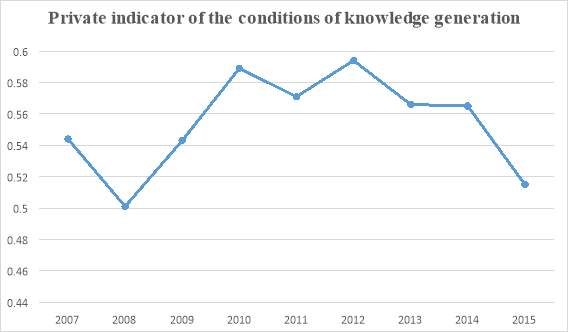
Figure 5.1 Private indicator of the conditions of knowledge generation
5.2.2 Private indicator of the dissemination and use of knowledge
Private indicator of the dissemination and use of knowledge characterizes the result of the interaction of participants RIS through the indicators of patent activity and innovation potential. The settlement data of the private indicator is presented in the table.
– the leading regions (the value from 1 to 0.66);
– regions with average development level (index value from 0,65999 to 0.33);
– the lagging regions (the value from 0,32999 to 0).
Table 5.4 Private indicator of the dissemination and use of knowledge
| 2007 | 2008 | 2009 | 2010 | 2011 | 2012 | 2013 | 2014 | 2015 | |
| Perm region | 0,619 | 0,570 | 0,550 | 0,523 | 0,609 | 0,655 | 0,548 | 0,556 | 0,570 |
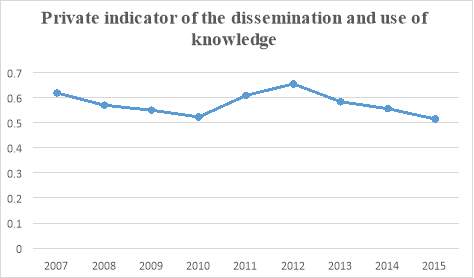
Figure 5.2 Private indicator of the dissemination and use of knowledge
5.2.3 Private indicator of cluster potential
The calculation results (table 5.3) and chart (Fig. 5.3) the dynamics of a particular indicator cluster potential shows greater stability and sustainability. This is due to the fact that sectoral specialization and the dominant activities that describes this particular indicator, are the fundamental basis of the regional economic system. Production specialization of the region associated with capital infrastructure production and human infrastructure, specialization of the population. These factors are subject to very slow change, as they affect the fundamental basis of the regional economic system, but that this stability allows us to develop and strengthen the advantages of regional specialization. Due to these stable and initially special, benefits and possible smart regional specialization.
– regions with average development level (index value from 0,65999 to 0.33);
– the lagging regions (the value from 0,32999 to 0).
Table 5.5Private indicator of cluster potential
| 2007 | 2008 | 2009 | 2010 | 2011 | 2012 | 2013 | 2014 | 2015 | |
| Perm region | 0,813 | 0,821 | 0,816 | 0,821 | 0,810 | 0,807 | 0,821 | 0,804 | 0,795 |
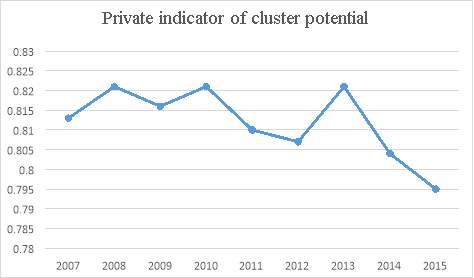
Figure 5.3 Private indicator of cluster potential
5.2.4 Private indicator of inclusion of the region into the world economy
Private indicator of inclusion of the region into the global economy describes the results of foreign trade development of the region, foreign direct investment in the region’s economy. The results of the calculations are presented in table 5.4 and on the chart (Fig.5.4).
– the leading regions (the value from 1 to 0.66);
– regions with average development level (index value from 0,65999 to 0.33);
– the lagging regions (the value from 0,32999 to 0).
Table 5.6 Private indicator of inclusion of the region into the world economy
| 2007 | 2008 | 2009 | 2010 | 2011 | 2012 | 2013 | 2014 | 2015 | |
| Perm region | 0,490 | 0,472 | 0,405 | 0,494 | 0,446 | 0,424 | 0,575 | 0,518 | 0,539 |
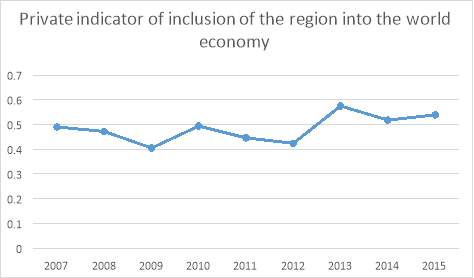
Figure 5.4 Private indicator of inclusion of the region into the world economy
5.2.5 Private indicator of socio-economic development of the region
The results of the calculation of private indicator of socio-economic development of the region is presented in table (5.5).
– the leading regions (the value from 1 to 0.66);
– regions with average development level (index value from 0,65999 to 0.33);
– the lagging regions (the value from 0,32999 to 0).
Table 5.7 Private indicator of socio-economic development of the region
| 2007 | 2008 | 2009 | 2010 | 2011 | 2012 | 2013 | 2014 | 2015 | |
| Perm region | 0,723 | 0,707 | 0,744 | 0,747 | 0,728 | 0,748 | 0,719 | 0,711 | 0,698 |
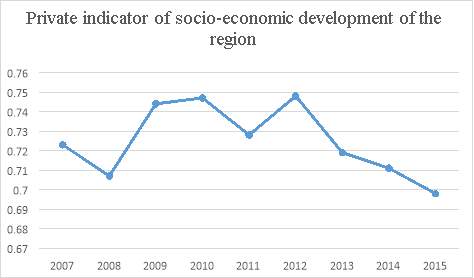
Figure 5.5 Private indicator of socio-economic development of the region
5.2.6 Analysis of the result the integral index RIS
Refer to the analysis results of the integral index of RIS. The results of calculation of integral index of RIS are presented in table 5.6 and chart (Fig.5.6).
Integral index RIS describes the level of development of the regional innovation system.
– the leading regions (the value from 1 to 0.66);
– regions with average development level (index value from 0,65999 to 0.33);
– the lagging regions (the value from 0,32999 to 0).
Table 5.8 Analysis of the result the integral index RIS
| 2007 | 2008 | 2009 | 2010 | 2011 | 2012 | 2013 | 2014 | 2015 | |
| Perm region | 0,638 | 0,614 | 0,612 | 0,635 | 0,633 | 0,645 | 0,646 | 0,631 | 0,623 |
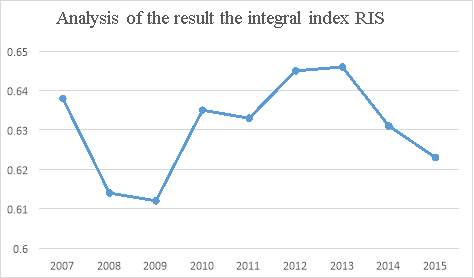
Figure 5.6 Analysis of the result the integral index RIS
5.3 Analysis the extent of RIS formation
In order to understand the mechanism of regional innovation system it is necessary to analyze in detail the relationship of the various partial indicators RIS. This test will allow to confirm or refute the statement about a particular relationship RIS subsystems, support subsystems RIS between them.
To identify the relationship between the individual indicators of the integral index of RIS was conducted correlation analysis. Statistical evaluation of the correlation coefficient shows the strength of the interaction variables, in our case, partial indicators. The correlation coefficient was calculated by the formula:
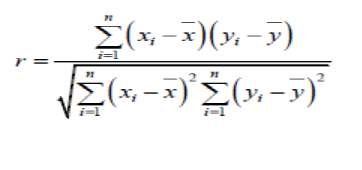 Formula (5.8)
Formula (5.8)
The value of r varies between -1 to +1 and means that increases (decreases) if one variable to the extent that it increases (decreases) is different. The closer r to extreme values, the greater the degree of linear relationship. If changing one value does not lead to a natural change another value, such a relationship is not correlation, statistical correlations do not exist or are extremely small.
The correlation coefficient, a larger module of 0.7 a powerful bond. The correlation coefficient, lower modulus of 0.5 indicates a weak connection.
Table 5.7 Analysis the extent of RIS formation
|
I socio-economic development /I knowledge generation |
I socio-economic development /I dissemination and use of knowledge |
I socio-economic development /I cluster potential |
I socio-economic development /I inclusion into the world economy |
I knowledge generation / I dissemination and use of knowledge |
I knowledge generation /I cluster potential |
I knowledge generation /I inclusion into the world economy |
I dissemination and use of knowledge /I cluster potential |
I dissemination and use of knowledge /I inclusion into the world economy |
I cluster potential /I inclusion into the world economy |
|
|
Perm regn |
0,73 |
0,15 |
0,38 |
-0,64 |
0,16 |
0,09 |
-0,15 |
-0,35 |
-0,42 |
-0,10 |
The result of correlation analysis shows some strong connections between variables only in some regions, which suggests there is a strong link between the individual indicators of the integral index as a whole. Strong ties require further analysis.
In the section analysed data on particular indicators and the overall index RIS for 2015. To analyse the extent of formation of RIS in the region for 5 particular indicators given in the pivot chart. The Diagram (Fig.5.7) clearly reflects the level of development of each particular indicator integrated index RIS –conditions of knowledge generation, dissemination and use of knowledge of the cluster potential inclusion into the world economy and socio-economic development.
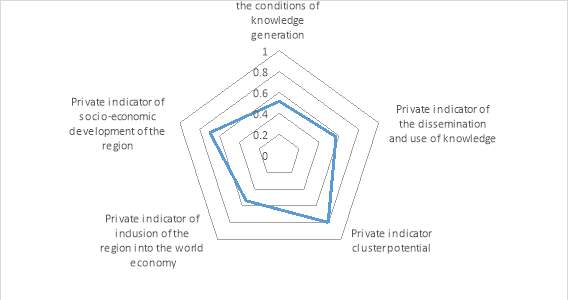
Figure 5.7 Analysis the extent of RIS formation
Perm region is not among the leading regions in spite of high values of particular indicator cluster potential (Fig.5.7), due to the high productive specialization, inherent in this region for quite a long time. High cluster potential is not realized on a competitive level. Private indicator of involvement in the world economy has the lowest value compared with other private indicators RIS. For this fact you need to pay attention, as the socio-economic development is possible only in a competitive region (and indicators particular indicator of socio-economic development is high enough), while any potential may simply fade away over time, without having high-quality development.
The above analysis can serve as guidelines in the development of strategies and programmes of regional innovative development. Each region has a different level of development of the elements of the structure of RIS therefore for the use of regional competitive advantages, or rather, the susceptibility of a regional system to certain factors, should pay attention to the weak elements of RIS. In turn, the underdeveloped components of RIS require special measures for their development, due to the fact that the developed and effectively functioning regional innovation system allows to obtain a synergistic effect of activities of enterprises and organizations of the region, innovative development of regional economy.
Thus, the analysis of the RIS of the Perm region revealed sufficient cluster capacity and weak development of other subsystems RIS – partial indicators of the conditions of knowledge generation, dissemination and use of knowledge, involvement into the world economy, socio-economic development. Private indicator of the cluster potential determines the possible priority areas of application development tools RIS, programmes of innovation. Other indicators reflect the immediate internal processes of the regional innovation system.
This pattern is characteristic of the Perm region. The region has average performance for all indicators private RIS, and for the overall index RIS is closer to the regions-leaders, but has no positive dynamics of development of RIS and even positive trends.
Chapter 6 Prospects for the development of RIS in Russia
6.1 The state development program
Developed the Strategy of innovative development of the Russian Federation for the period till 2020 “Innovative Russia – 2020”. In this document are fairly ambitious, but in fact achievable long-term development goals, namely: ensuring a high level of welfare, strengthening the geopolitical role of the country as one of the global leaders that define the world agenda.
To achieve these goals is possible only in case of transition of the economy to innovative socially oriented development model.
Russia is able to achieve an economy of leadership and innovation to 2020. if you notice a significant increase in such indicators as:
- significant market share in high-tech and intellectual services;
- increasing the share of high-tech sectors in GDP;
- increase the share of innovative production in the total output of the industry;
- increase the share of innovative active enterprises.
In the strategy of innovative development of the Russian Federation for the period up to 2020 there is a section “Innovation policy at the regional level”, which highlights the main instruments of regional policy of innovative development, namely:
– develop and implement development programmes on a regular basis competition of constituent entities of the Russian Federation;
– granting subsidies to small and medium businesses to enhance innovation activities, including the payment applied R & d, engineering services, conducting market research, patenting and certification of products, market, interest rate subsidies on loans through the regional program of support of small business;
– providing financial and material support to the creation and development of innovation infrastructure, including business incubators, technology parks, technology transfer centres, innovative-technological centres, centres of collective use of equipment, centres of prototyping and design, regional venture capital funds, technology museums, youth-oriented and stimulating interest in technical education;
– encouraging the production of innovative products in the framework of the procurement of goods and services for state and municipal needs;
– implementation of innovative development programs of state and municipal institutions, etc.;
-granting tax privileges on profit of organizations and tax on immovable property tax;
– support for educational programs of primary and secondary education that in the future, able to ensure the development of human resources of innovative activity;
– support of foreign economic activity;
– fostering a culture of innovation in society and increase of prestige of innovative activity.
It should be noted that currently a significant number of regions involved in the global competition for innovation capital (ability of industries or enterprises to produce high technology products that meet the requirements of the world market). It is possible that the result of this “race” will increase innovation performance across Russia. For upcoming work in the future for all elements of the RIS will be a key aspect of finding a balance with both the power and General interaction of all innovation active enterprises and organizations of innovation infrastructure.
As principal of innovative enterprises in the regions already exist and are active, Russia should take a course on the development of mechanisms of integration and interaction of all participants of the system, this will allow to obtain on the basis of a synergistic effect is most effective results in the transformation of regions in the “points of growth” that will continue to support the widespread use of knowledge in the country’s priority areas of development.
6.2 The mechanism of innovative activity in the region
Based on the way in which is calculated the performance of RIS in the regions it is worth mentioning the main indicators whose values must be above average. Indicators of scientific capacity, financial provision of research and development, inventive activity, the impact of research activities, quantitative security types of organizations of innovative infrastructure, innovative activity, product innovation, technological upgrading of production and innovation of small business.
The value of these indicators allows to evaluate the performance of RIS. Combines all these indicators of the Russian regional innovation index, it is considered final and is formed as the arithmetic average of the normalized values of all included in the Rating of innovative development of subjects of the Russian Federation indicators. The rating of innovative development includes macroeconomic indicators, the educational potential of the population, expenses of the consolidated budget, etc. According to the value of this indicator, all regions of Russia in the Ranking are divided into 3 groups. In groups 1 and 2 regions includes regions with high and average performance. However, even in these groups of regions, where the figure is above average – the RIS still is not “perfect” and self-sufficient. This is because a uniform development of all components of a rating of innovative development is typical only for a small number of regions. At the moment the situation for these groups is as follows: in regions of the 1st and 2nd groups of high values of one of the blocks of indicators combined with low other no less important.
6.3 Objectives and principles
In General, the activities recommended on coordinating the activities of the innovation organisations of the region should be aimed at solving basic common issues related to the development of RIS mentioned above.
For the generated on the coordinator outlines the main objectives:
– it is necessary to determine the main objectives and priority areas of scientific-technical and innovation activities with the strategic areas of economy development of the region;
-to form effective supporting institutional environment of RIS to meet the needs and reducing risks of all subjects of innovative activity;
– increase the number of innovative business entities and increase of their share in the GRP;
– to implement the commercialization and transfer of advanced technologies developed in research institutions, innovative industrial parks, institutions of higher and secondary vocational education, small enterprises scientifically-technical sphere;
– to develop a system of self-regulation in the business sector in the innovation sphere;
– to create an effective system of financing for innovative business, and also to monitor the level of indicators of financial security research and development;
– to establish a market for new technologies and innovative developments, and measures that will be aimed at the development and effective use of scientific-technical and innovation potential of the region, and their subsequent implementation;
– the need to develop effective mechanisms for the creation and implementation of innovative projects using the advantages of small and medium farms and the concentration of resources on priority directions of innovative development of regional economy;
– to stimulate through effective tax policy in the real sector of the economy on the creation and implementation of innovations;
– contribute to the implementation of measures for the protection of intellectual property rights of the owners of innovative product and overall assistance in solving legal issues;
– use the possibilities of interregional and international cooperation in science, technology and innovation for the development of innovative capacity.
When creating such a body it is important to focus on the priorities of the state policy to promote the development of innovative business in the region.
Should focus on some organizational and technical issues. In the generated mechanism should adhere to the principle of optimality, which involves the deliberate regulation of the development of SMEs in the innovation sphere in the region, carried out in accordance with current innovative economic development objectives in the region.
It is also important to consider that the mechanism should be flexible to react to necessary changes without losing efficiency, as well as the important principle of feedback and visitation. The strengthening of the role of feedback is able to create a mutual and healthy relationship of the parties, aimed at finding lasting solutions to the problem. Operational feedback can reduce the risks of failures and improve performance. If all elements of the RIS to respond quickly to change, achieve high efficiency will be much simpler.
In the generated mechanism should adequate used information, important daily environmental monitoring, as well as all of the components of RIS. By itself, the body should be multidisciplinary, that is, must simultaneously encompass the entire range of issues that are associated with the development of innovative businesses and their relationship to external and internal factors of development.
The operations of the mechanism must meet Federal approaches in the development of innovative activities and based on modern requirements of economic development.
From all the above it follows that the formed body will be a kind of complex organization-coordinator, in which a number of departments will be responsible for the implementation of all necessary functions and problem solving. And for the first time of the existence is even possible to offer some recommendations for the operation of the mechanism:
– implement a regular monitoring system of activity of enterprises RIS. Statistical observation will allow to obtain timely and reliable information about the dynamics of development of innovation system participants.
– to establish contact with potential business investors and promote the development of public-private partnerships through, for example, co-investment joint innovative projects in various stages of implementation.
– to promote the awareness of large and medium-sized businesses in the region about the existing scientific-technical and innovative developments and inventions.
– interact with infrastructure agencies to promote regular training, for example, by conducting training seminars. This includes interaction with educational institutions, formed the authority in connection with the abundance of relationships with innovative businesses will be able to arrange for internships of students in this profile of students, to organize seminars with invited experts, etc.
– to establish cooperation between the participants of the RIS in order to research and technological activities. To provide access to all innovation-active businesses to the services and developments of each other.
6.4 Chapter summary
The recommendations listed above, if their implementation would improve the functioning of organisations, infrastructure and scientific and educational complex in the region. In this case, it will create objective preconditions for increase of efficiency of process of formation and development of innovative economy in the regions and in the whole, and this is one of the highest priorities for the country’s development in the current period.
Research conclusion
The study of regional innovative system on the basis of the proposed model RIS, techniques indicative assessment of the level of development of RIS, and the algorithm of making managerial decisions to improve the RIS with the necessary tools of organizational-economic mechanism of management of development of RIS led to the following scientific and practical conclusions and results:
– analysis of scientific approaches to the concept of regional innovation system is allowed to form on the basis of an integrated approach model of regional innovation system as a set of subsystems of the generation process-transfer-commercialization-diffusion of new knowledge and technologies through triple helix of innovation, with interaction “with” and “between” subsystems of cluster potential of the region, inclusion of the region into the world economy and socio-economic development of the region.
– analysis of approaches to concepts and models RIS allowed to conceptually justify the integration of the subsystems of the cluster potential of the region, inclusion of the region into the world economy and socio-economic development in the structure of RIS. The clusters are considered as points of growth and development of RIS, as the centres of the launch of triple helix innovation, as centres of generation-transfer-commercialization-diffusion of new knowledge and technologies. Clusters are characterized primarily by the geographical proximity and common activities can become sources of innovative development of the region as a whole.
– the proposed methodology indicative valuation RIS systematize the elements of the structure of RIS, on which you can work to improve RIS. The technique involves the use of available statistical data sufficient for an objective assessment of the quantity (33 parameters) that allows to evaluate the RIS at no additional cost in time and money and predict the process of change and development of RIS, which is important in the development and adjustment programs for socio-economic development of the region and private Agency programs focused on innovation development of the region. Private indicators are proposed as a structural integral index RIS, describe the most important subsystems of the regional innovation system and, in turn, allow the analysis of strengths and weaknesses RIS. The practical value of this methodology is the possibility of analysing the strengths and weaknesses of the RIS.
– a set of partial indicators integral index RIS allows to identify strong and weak subsystem of RIS, which allows to identify priorities in the use of instruments of state management of development of RIS. The tools of organizational-economic mechanism of state management of development of RIS to improve RIS, eliminate its weaknesses, determined through the particular indicators of methods indicative valuation RIS. Recommendations can be used at different levels of management of regional development.
– analysed key points of growth of RIS: the innovative infrastructure of the University, the cluster interaction of science and business. The growth point RIS correspond to the elements of the concept of triple helix innovation. The proposed list of instruments of state management of development of RIS and determined their relationship with private indicators integral index RIS, which facilitates the task of choosing the tools for improving RIS.
– generalizing from a study aimed at studying the mechanism of RIS, is development of methodical recommendations for improving the regional innovation system that meets the requirements of comprehensiveness, namely, the substantiation and concretization of measures to support the various levels of government in the development of regional innovation system. A key element of the control mechanism of the RIS development is the organizational and economic mechanism of state management of development of RIS. Suggested group of tools and support measures of state administration development of RIS for each structural subsystem of RIS. Justified a comprehensive approach to the development of RIS, taking into account not only the scope of the generation-transfer-commercialization of new knowledge and technology, but also clustering and intra-cluster interaction of science and business, as well as, to a certain extent, the inclusion of the region into the world economy and its socio-economic development.
This study allows to conclude that the improvement of the regional innovation system is possible through the use of some tools of organizational-economic mechanism of state administration development of RIS influencing of RIS subsystem and their interactions.
References
[1] Andersson T., Hansson E., SchwaagSerger S., Sцrvik J., 2004. The Cluster Policies Whitebook. Malmц: IKED.
[2] Blank W., Kruger C., Moller K., Samuelsson B., 2006. A String of Competence Clusters in Life Sciences and Biotechnology. Scan-Balt Competence Region Mapping Report.
[3] Brask H., 2010. The EU Strategy — keep focus on green and smartgrowth in the Baltic Sea Region / Baltic Rim Economies, Bimonthly Review, № 5, 2010.
[4] Beljakova G. J., Sokolova E. L., 2008, Infrastructural providing of innovation development, SibGTU.
[5] Bjorn T. Asheim, Helen Lawton Smith & Christine Oughton, 2011, Regional Innovation Systems: Theory, Empirics and Policy Regional Studies Volume 45, Issue 7.
[6] Cluster Initiative Objectives, GCIS 2003
[7] Cameron D., 2010. No one will be left behind in a Tory Britain: The Observer, № 28.
[8] Castells M., 2010. The Rise of the Network Society. 2nd ed. Chichester: Wiley-Blackwell.
[9] Desrochers P., 2009. The Next Silicon Valley? On the relationship between geographical clustering and public policy: International Entrepreneurship Management Journal. Vol. 5.
[10] Drucker P. F., 1992. The New Society of Organizations: Harvard Business Review, September-October.
[11] Drucker P. F., 2001. The Next Society: a survey of the near future // The Economist, Vol. 361, No. 8246, 3–9 November.
[12] Eriksen T. H., 2001. Tyranny of the Moment: Fast and Slow Time in the Information Age. London: Pluto Press.
[13] Etzkowitz H., Leydesdorff L., 1995. The Triple Helix of University-Industry-Government Relations: A Laboratory for Knowledge Based Economic Development // EASST Review 14, № 1.
[14] Etzkowitz H., 2008. The Triple Helix: University-Industry-Government innovation in Action. London: Routledge.
[15] Guillen P., 04.03.13, Innovation Ecosysytem Analysis – Ecosystem Mapping., URL: http://www.worldindustrialreporter.com/innovation-ecosystem-analysis-ecosystem-mapping/
[16] Hasumi Y., 2007. Roles of International Organizations and the EU in Governing the Global Economy: Implications for Regional Cooperation in Asia. The Third EU-NESCA Workshop, Korea University, May 2007.
[17] Ignatova T. V., Cherkasova T. P., 2011, Innovation growth in Russia: Kaspijskij region: Policy, Economy, Culture., № 2.
[18] Ivanova D. E., 2015, Indicative evaluation of innovative activity in the region through an econometric methodology of main components: SKAGS – № 1.
[19] Indicators of Science and Technology, Tokyo, 2005.
[20] Ketels C., 2009. Clusters, Cluster Policy, and Swedish Competitiveness in the Global Economy. Expert report no. 30 to Sweden’s Globalisation Council.
[21] Kuznetsov Y. and Sabel C., 2005. New Industrial Policy: Solving Economic Development Problems without Picking Winners: World Bank Institute. June 13.
[22] Kupriyanov S. V., Stryabkova E. A., Zarkovich A. V., 2014, Features assessment of regional innovation system with regard to the impact of cluster development: Economics science – № 9.
[23] Leydesdorff L., 2008. Configurational Information as Potentially Negative Entropy: the Triple Helix Model- Entropy, № 12.
[24] Leydesdorff L., 2011. The Triple Helix, Quadruple Helix: and an N-tuple of Helices: Explanatory Models for Analysing the Knowledge-based Economy?: Amsterdam School of Communication Research (ASCoR), University of Amsterdam.
[25] Lindholm A., 2010. The EU Strategy for the Baltic Sea Region. Update from European Commission: State of the Region Report 2010.
[26] Lindholm M. R., 2009. Baltic Sea Agenda: Northern European Knowledge Market: Creating a single market for knowledge in the Baltic Sea Region. KRAKS Fond.
[27] Lundvall B. A. (ed). National Innovation Systems: Towards a Theory of Innovation and Interactive Learning: Pinter, London, 1992.
[28] Lundvall B. A., 1998. The Learning Economy — Challenges to Economic Perspectives on Markets, Firms and Technology: Edited by Johnson B. and Nielsen. J. I.: Edward Elgar.
[29] Mirolyubova T. V., 2009. Regional capacity of clusters development, PGNIU – №4.
[30] National Intelligence Council, 2000. Global Trends 2015: A Dialogue About the Future with Nongovernment Experts.
[31] National Intelligence Council, 2006. Global Trends 2025: A Transformed World.
[32] OECD, 2007. Competitive Regional Clusters: National Policy Approaches.
[33] Porter M. E., 1990 (2nd ed. — 1998). The Competitive Advantage of Nations. N-Y: Free Press.
[34] Porter M. E., 2008. Clusters and Competition: New Agendas for Companies, Governments, and Institutions / In: On Competition (new edition), HBS Press, Boston: October 2008 (first edition 1998).
[35] Porter M. E., 2003. Russian Competitiveness: Where Do We Stand? Institute for Strategy and Competitiveness. Harvard Business School: U.S.-Russian Investment Symposium. Boston, Massachusetts, 13 November 2003.
[36] Plotnikova T. N., Konyakhina T. B., Solomonova E. B., 2015, Indicative estimates innovative susceptibility region: Economics science – № 12.
[37] Samuelsson B., 2005. ScanBalt BioRegion: Top of Europe. Presentation at the Baltic Development Forum Summit.
[38] Schwaag Serger S. and Hansson E., 2004. Innovation in the Nordic-Baltic Sea Region: BDF, August 2004.
[39] The World Economic Forum. http://www.weforum.org/reports/global-competitiveness-report-2014-2015
[40] Vladimirova O.N., 2010, Innovative sensitivity as a factor of regional innovation system formation: Kreativnaja ehkonomika, № 3.
[41] Views of regional innovations and innovation policy. OECD.
[42] www.gks.ru
[43] www.fasi.gov.ru
[44] http://psu.ru
Cite This Work
To export a reference to this article please select a referencing stye below:
Related Services
View allRelated Content
All TagsContent relating to: "Sciences"
Sciences covers multiple areas of science, including Biology, Chemistry, Physics, and many other disciplines.
Related Articles
DMCA / Removal Request
If you are the original writer of this dissertation and no longer wish to have your work published on the UKDiss.com website then please:




